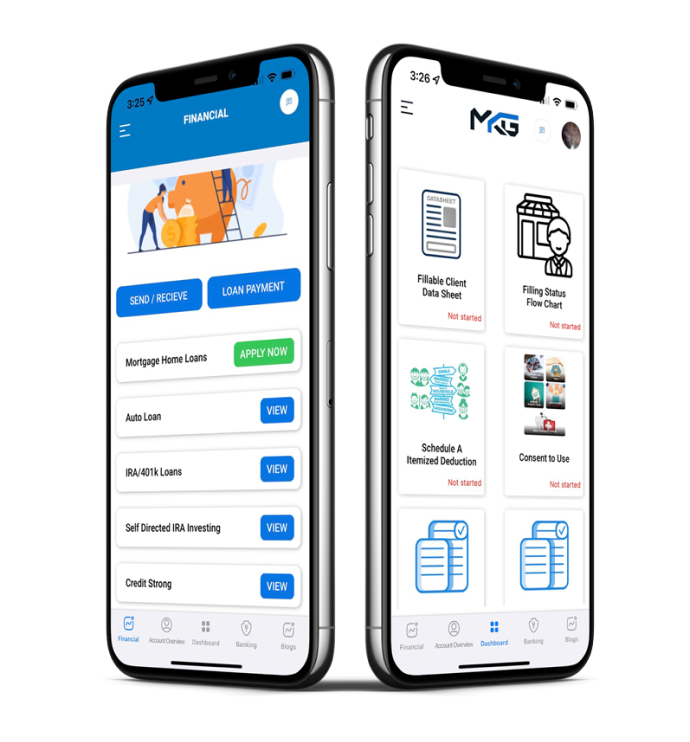Get Your Refund Faster: Tell IRS to Direct Deposit your Refund to One, Two, or Three Accounts
Now, more than ever, you need a reliable, fast, secure, contact-less way to receive your money. The best and fastest way to get your tax refund is to have it electronically deposited for free into your financial account. The IRS program is called direct deposit. You can use it to deposit your refund into one, two, or even three accounts. Even if you don’t have a checking account, there are other options available for direct deposit. Direct deposit is now also available for returns filed after their due date.
Eight out of ten taxpayers get their refunds by using direct deposit. It is simple, safe, and secure. This is the same electronic transfer system used to deposit nearly 98 percent of all Social Security and Veterans Affairs benefits into millions of accounts.
Combining direct deposit with electronic filing is the fastest way to receive your refund. There’s no chance of it going uncashed, getting lost, stolen, or destroyed. The IRS issues more than nine out of ten refunds in less than 21 days. Taxpayers who used direct deposit for their tax refunds also received their stimulus payments more quickly. You can track your refund using our Where’s My Refund? tool.
How to Use Direct Deposit
Direct deposit is easy to use. Just follow these steps:
- Select direct deposit as your refund method through your tax software.
- Enter your account number and routing number.
- If you are filing by paper, tell your tax preparer you want direct deposit.
- Double-check your entry to avoid errors.
Don’t have a check available to locate your routing and account number? No problem. A routing number identifies the location of the bank’s branch where you opened your account, and most banks list their routing numbers on their websites. Your account number can usually be located by signing into your online banking account or by calling your bank branch.
If you have a prepaid debit card, you may be able to have your refund deposited to the card. Many reloadable prepaid cards have account and routing numbers that you can provide to the IRS. Check with the financial institution to ensure your card can be used and to obtain the routing number and account number, which may be different from the card number.
Some mobile apps and prepaid debit cards also allow for direct deposit of tax refunds. These apps and cards must have routing and account numbers associated with them that can be entered on a tax return. Taxpayers should check with the mobile app provider or financial institution to confirm which numbers to use.
Don’t have a bank account? Visit the FDIC website or the National Credit Union Administration using their Credit Union Locator Tool for information on where to find a bank or credit union that can open an account online and how to choose the right account for you. If you are a Veteran, see the Veterans Benefits Banking Program (VBBP) for access to financial services at participating banks. You can also ask your preparer if they have other electronic payment options that they offer.
Benefits of Direct Deposit
Direct deposit offers several benefits:
- Speed: Direct deposit is the fastest way to receive your refund. Whether you file electronically or on paper, direct deposit gives you access to your refund faster than a paper check.
- Security: Direct deposit eliminates the risk of your refund check getting lost, stolen, or destroyed. It is a safe and secure method of receiving your refund.
- Convenience: Direct deposit saves you time and effort. You don't have to wait for a check to arrive in the mail or go to the bank to deposit it.
- Cost Savings: Direct deposit saves money for both taxpayers and the government. It costs the nation’s taxpayers more than $1 for every paper refund check issued, but only a dime for each direct deposit made.
Splitting Your Refund
The federal tax refund is often the largest single check many people receive. It’s an opportune time to start or add to your savings. You can divide your refund into two or three additional financial accounts, including your Individual Retirement Account (IRA), or purchase up to $5,000 in U.S. Series I Savings Bonds.
Splitting your refund is easy. You can use your tax software to do it electronically. Or, if you file a paper return, you can use IRS’ Form 8888, Allocation of Refund (Including Savings Bond Purchases). Just follow the instructions on the form. If you want the IRS to deposit your refund into just one account, use the direct deposit line on your tax form.
With split refunds, you have a convenient option for managing your money — sending some of your refund to an account for immediate use and some for future savings — teamed with the speed and safety of direct deposit.
Important Considerations
Here are some important considerations to keep in mind:
- Your refund should only be deposited directly into a United States bank or United States bank affiliated accounts that are in your own name, your spouse’s name, or both if it’s a joint account.
- No more than three electronic refunds can be deposited into a single financial account or pre-paid debit card. Taxpayers who exceed the limit will receive an IRS notice and a paper refund.
For more information, you can refer to the following resources:
- Frequently Asked Questions about Splitting Federal Income Tax Refunds
- Form 8888, Allocation of Refund (Including Savings Bond Purchases)
- Buying U.S. Series I Savings Bonds with your tax refund
- Frequently Asked Questions about buying U.S. Series I Savings Bonds with your refund
- Where's My Refund?
- Direct Deposit Limits
By choosing direct deposit for your tax refund, you can ensure that you receive your money quickly, securely, and conveniently. It's the smart choice for getting your refund faster.
